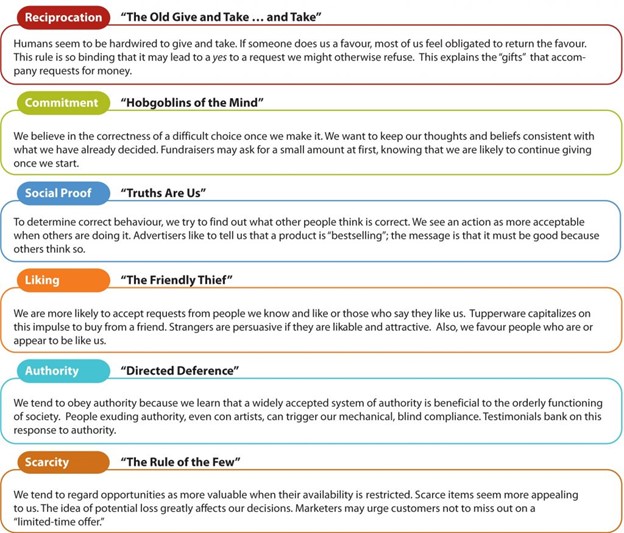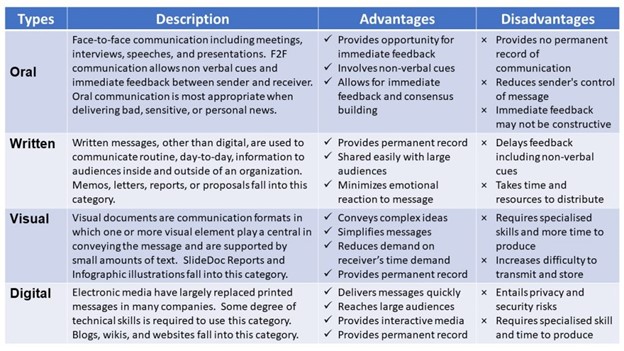67
Chapter Essential Questions
What written, verbal and interpersonal skills are required for a manager working in First Nation communities?
How can a strategic approach benefit communication?
Lesson 5: Effective Communication
Outcomes
By the end of this lesson, you should be able to:
- Explain a step -by -step process for organizing your writing and describe the most effective structure for introductions, body paragraphs, and conclusions.
- Identify ways to keep your written communication clear and impactful, and discuss how to tailor your writing to your audience.
- Demonstrate how to write effective informative, persuasive, or goodwill messages, and explain the benefits of using different tones and language for different readers.
- Describe the most common types of written communication in the workplace and their functions, and identify which medium will serve your purpose best.
- Explain the broad – narrow – broad approach to writing and how it works, and describe common writing mistakes and how to avoid them.
Getting Organized
The steps in the writing process may seem time consuming at first, but following these steps will save you time in the future. The more you plan in the beginning by reading and using prewriting strategies, the less time you may spend writing and editing later because your ideas will develop more swiftly.
Writing is another key piece of communication. However, writing does not have to be a complex process. Rather, it can be broken up into small steps that allow you to take something from a simple idea to a well written piece.
Here are the steps to organize your ideas:

Brainstorming
This part of the writing process allows you to narrow down what you want to write about and how you want to share that information. Writing is a complex task and using a list will ensure that you are creating a clear and easy to understand product.
It is critical for this part of the process that you know the purpose of the message, what visuals you want to include, and brainstorm anything else that comes to mind.
TIP
Some pre-writing strategies can be used together. For example, you could use experience and observations to come up with a topic that you would be including in an email. Then you could use freewriting to describe your topic in more detail and figure out what you have to say about it.
Focusing/Outlining
Now that you have an idea, you can begin to outline or focus on what to share about this idea. Think about your audience and ask yourself:
Q. What is their background?
Q. Why are they reading your document?
Q. What do they already know?
Q. What do they need to know?
Q. Do you have more than one target audience?
Here is a simple example of an outline:
- Main idea – Is social media harmful?
- Introduction
- Give a brief history of social media
- Provide examples of social media to reader
- The advantages of social media
- Proof or evidence on how it can help an office function
- The disadvantages
- Proof or evidence on how it can disrupt an office function
- How to use it
- Steps on how it can be used safely in the work place
- Conclusions
- Summarize your opinion if social media should be used
This part of the writing process is the heart of the message. It allows you to organize and create flow for you message.
PAIBOC Method
PAIBOC is an acronym that stands for Purpose, Audience, Information, Benefits, Objections and Context (Locker & Kaczmarek, 2007 as cited in Ames, 2018 p2). In other words, it is an essential mapping tool that should be used in all areas of communication.
Purpose – What is the purpose for your message?
Audience – Who is your audience?
Information – What information must your message include for the audience?
Benefits – How will the reader benefit from this message?
Objections – What objections can you expect your readers to have?
Context – How will the context affect the readers response?
First Draft/Evaluating
Once you have your outline, you will want to start putting your ideas into bullet points. It is ok to be messy and free flowing with your ideas at this stage. Avoid trying to write perfect sentences and even be open to writing spelling mistakes and proper grammar. This is the time to get your ideas onto paper and help create the skeleton for your ideas to come to life.
Revision
Now that you have your ideas laid out in bullet points, you will want to begin revisions. This process should be taken in smaller steps as well. For example, start with one task of making your bullet points or messy ideas into structured sentences. You can then go back and review for grammar and punctuation. By taking it one task at a time, you will be focused in and ensure that your draft will come together.
Using the PAIBOC you can being the revision process and focus on the meaning of the message. Once you finish the revision you want to ask yourself:
- Is the meaning clear?
- It is tactful? Is it complete?
Final Draft
This is the final version of your communication and will be your final draft to be shared with your audience. After you have checked for language, grammar and sentence structure you may want a fellow co-worker or colleague to read the draft. This can provide feedback to ensure that the ideas are clear and the audience knows what ideas you were trying to express.
Writing Persuasive and Goodwill Messages
Communication is impactful and you want to think about what you want to achieve from your words when creating a message. Messages are written for a variety of reasons include to share good news and persuade people.
Persuasive messages are meant to intrigue, inform, convince or call someone to action. A persuasive message should:
- Create a good impression of the writer;
- Build or establish a good impression of the writers’ organization;
- Develop a relationship between the writer and reader;
- And reduce barriers or noise around the subject.
Review the table below to show the four parts of a persuasive message
| Part | Description |
| Attention statement (or hook) | Use humour, novelty, surprise, an unusual fact, or a question to get the attention of your audience. |
| Introduction | Build interest by appealing to your audience’s needs and wants and include a purpose statement to set up expectations. |
| Explanation | Establish credibility and build your relationship with your audience, discuss attractive features, and compare with competitors, addressing concerns or potential questions before they are even considered. |
| Call to action | Sum it up and offer solution steps or calls to action, motivating your audience to take the next step. The smaller the step, the more likely your audience will comply. Set up your audience for an effective closing. It should be clear what your audience should do, by when, and how. |
The six persuasive principles that influence human behaviour:

Figure 27.2: The six persuasive principles that influence human behaviour (Business Communication, 2019).
The ‘5 S’ Principals of Goodwill Messages
A goodwill message is a friendly and professional statement that creates a positive relationship with the reader. Keeping your message specific, sincere, selfless, short and spontaneous is an easy to follow structure for a goodwill message.

Figure 28.1: A summary of the 5 S’s of goodwill messages.
Specific – Be specific to the situation you are trying to address and be clear on your organizations purpose.
Sincere – Do not use clichés and write from a genuine place and use honest words.
Selfless – Put the spotlight on the reader and and leave yourself out of the conversation.
Short – Keep it simple and to point.
Spontaneous – Write your message so that it follows closely on the news that prompted it.
TIP
At some point in your career you may have to file a complaint with your human resources department. Using chronological order is a useful tool in describing the events that led up to your filing the grievance. You would logically lay out the events in the order that they occurred using the key transition words. The more logical your complaint, the more likely you will be well received and helped.
Common Communication
Communication takes place in many forms in the workplace. However some forms of communication are more popular than others.
The advantages and disadvantages of the four categories of business communications. (Business Communication Essentials, 2016).
Journal Prompt
Using the forum labelled Course 5: Chapter 5 make a journal entry responding to the prompt below. Ensure that you title the entry Lesson 5. After writing a journal entry, go and make a comment on two other posts from your classmates. It can be about anything you noticed, liked, agreed with etc. The idea is to continue the dialogue about the topic.
Writing and storytelling have played very important parts in the formation of many cultures and societies throughout history. How is it possible for simple stories and written words to have such profound impacts on people? Share your thoughts.
Journal Entry Evaluation Rubric
|
Criteria |
Exemplary (4) |
Accomplished (3) |
Developing (2) |
Beginning (1) |
|
Purpose |
Strong voice and tone that clearly addresses the purpose for writing. |
Appropriate voice and tone. The purpose is largely clear. |
Attempts to use personal voice and tone. Somewhat addresses the intended purpose. |
Demonstrates limited awareness of use of voice and tone. Limited evidence of intended purpose. |
|
Understanding |
Many interesting, specific facts and ideas are included. |
Many facts and ideas are included. |
Some facts and ideas are included. |
Few facts and ideas are included. |
|
Conventions |
All grammar and spelling is correct. |
Only one or two grammar and spelling errors. |
A few grammar and spelling errors. |
Many grammar and spelling errors. |
|
Reply |
Made two significant contributions to the online forum. Highly supportive of others. |
Made one contribution to the online forum. Supported group members. |
Attempted to contribute to online forum but was vague and unclear in the writing. |
Minimally involved. Offered limited support to online group members. |
References
Ames, K. (2018). COMM12033 Speech & Script – Week 6: Genres of Speech – Corporate, CQUniversity Moodle.

